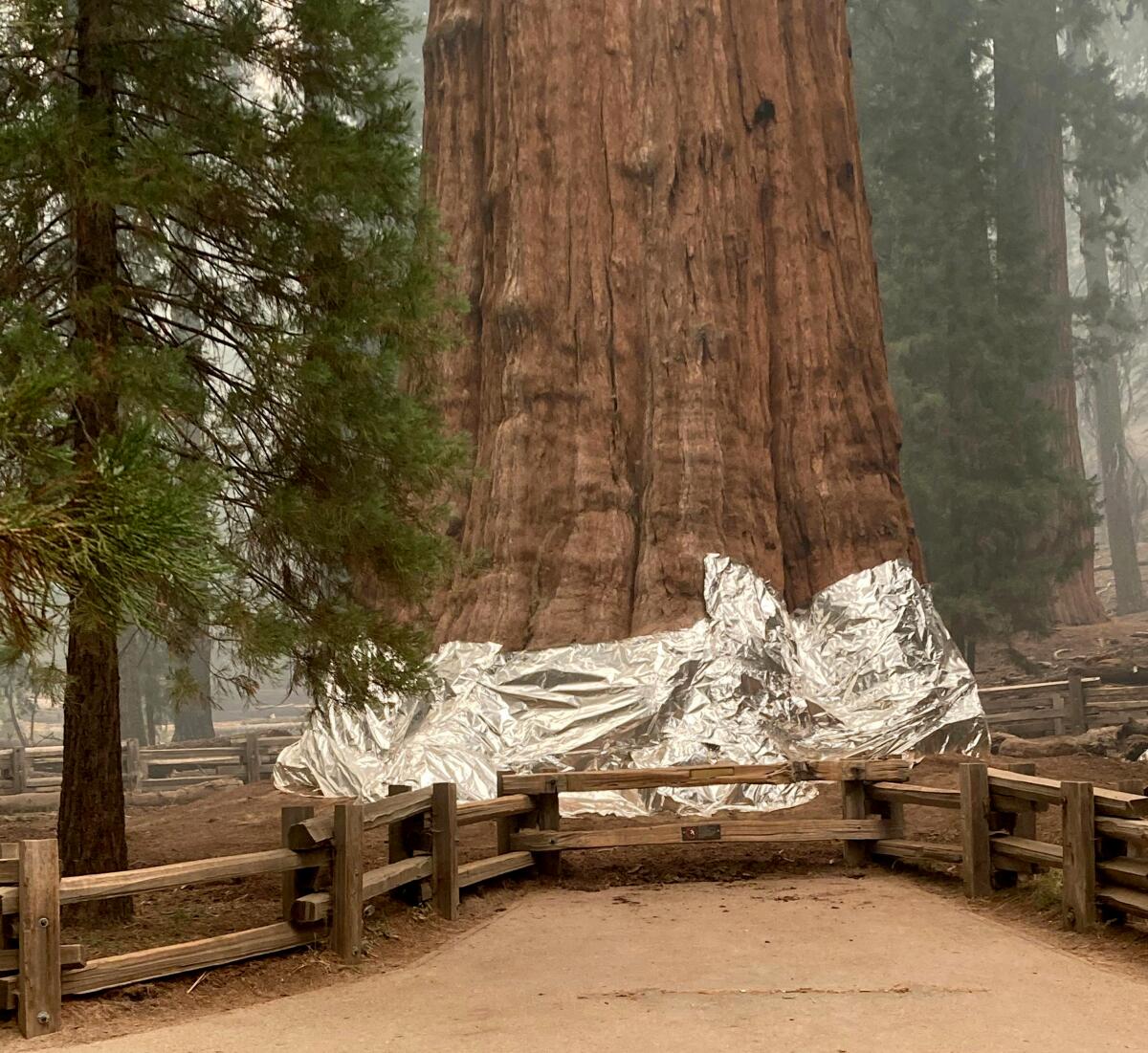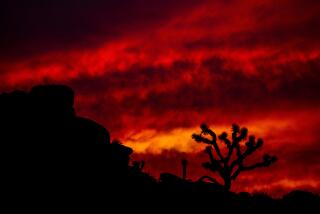Letters to the Editor: Save the General Sherman giant sequoia — then rename it

To the editor: No one wants to see the General Sherman sequoia killed in one of the wildfires now raging in California. But is the threat to the great tree nature’s way of making a point?
The world’s largest tree is named after Union Army Gen. William Tecumseh Sherman, who pioneered “scorched earth” warfare during the Civil War. In 1864, Sherman’s army torched Atlanta and then marched about 250 miles to Savannah, Ga., burning homes, farms, hospitals and schools along the way in a campaign to bring both Confederate forces and Georgia’s civilian population to their knees.
It wasn’t a “march to the sea,” as historians spin it; it was a months-long campaign of savagery.
As monuments to Confederate leaders are removed across the country, a monument to Sherman may come down too. It feels like Mother Nature is reminding us that cruelty was employed by Union forces in order to do away with the outrageous cruelty of slavery.
I hope Sherman’s tree will be spared, then renamed.
Karen Schwarz, Los Angeles
..
To the editor: Reading about how more than 1,700 firefighters were in a desperate battle to defend our giant sequoia trees from advancing flames, and how last year the Castle fire decimated nearly 10% of the world’s population of these already endangered trees, I think it is time to raise the question as to whether current methods of fighting wildfires are sufficient to tackle this important task.
This goes beyond protecting these remarkable trees; it includes safeguarding human life, homes, structures, wildlife and the environment generally.
The situation calls for new, supplemental methods that will reduce the time to extinguish wildfires, and thereby reduce the destruction they cause, as well as reduce the amount of carbon dioxide they pour into the atmosphere that contributes to global warming.
However, having proposed one such method, I have found considerable resistance to such innovation, and this is therefore part of the problem.
Frank R. Tangherlini, San Diego
More to Read
A cure for the common opinion
Get thought-provoking perspectives with our weekly newsletter.
You may occasionally receive promotional content from the Los Angeles Times.









